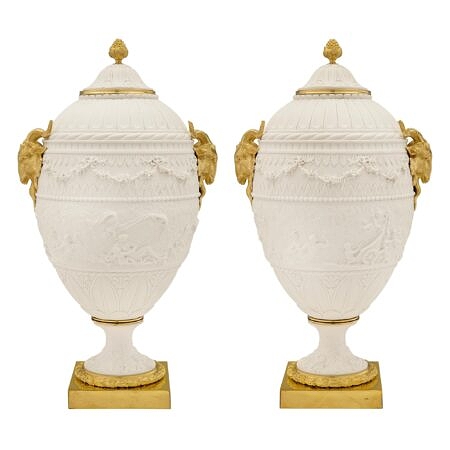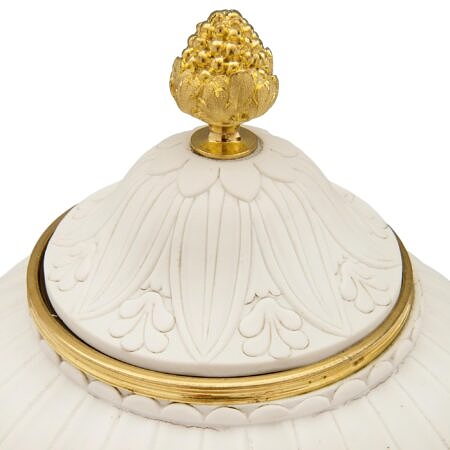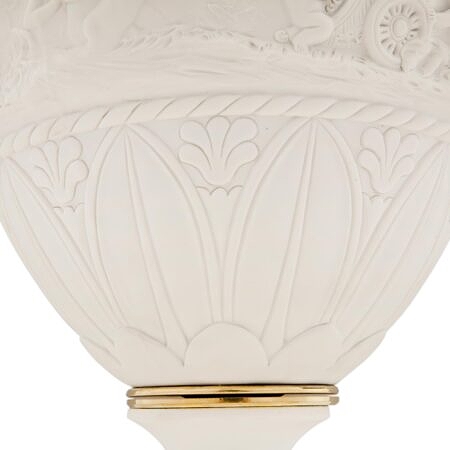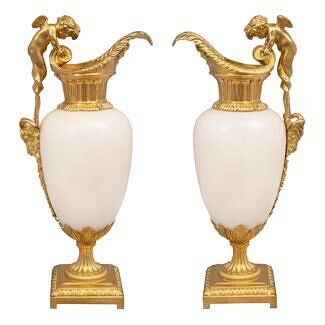A pair of French 19th century Louis XVI st. Biscuit de Sèvres and ormolu lidded urns, signed Sèvres
Sorry, This item has sold
A sensational and rare pair of French 19th century Louis XVI st. Biscuit de Sèvres and ormolu lidded urns, signed Sèvres. Each beautiful urn is raised by a square ormolu base with a fine wrap around berried laurel band. The... — Read More
A sensational and rare pair of French 19th century Louis XVI st. Biscuit de Sèvres and ormolu lidded urns, signed Sèvres. Each beautiful urn is raised by a square ormolu base with a fine wrap around berried laurel band. The socle pedestals display intricately detailed cherubs playing amidst luxuriant foliate scrolls while playing musical instruments. The beautifully shaped bodies display an impressive array of finely executed patterns, and lovely detailed wrap around scenes with elegant maidens playing with cherubs amidst a chariot and musical instruments. Above are exceptional porcelain swaging floral garlands tied with ribbons while extending around the urns and flanked by richly chased ormolu rams heads at each side. The removable lids display fine foliate patterns and lovely ormolu acorn finials. The lids lift off to display the signature and finished ormolu inside. — Read Less
- Item # 11151
-
H: 20 in L: 11.5 in D: 9.5 in
H: 51 cm L: 29 cm D: 24 cm
- France
- 19th Century
- Ormolu, Porcelain
- Louis XVI st. Read More
- Sèvres Read More
It was founded through the support of King Louis XV of France and at the initiative of Madame Pompadour to be located near her Château.
Due to Sèvres’ reputation for excellence and prestige, it has always attracted some of the best artists throughout history; François Boucher, Albert-Ernest Carrier-Belleuse, Étienne Maurice Falconet, Alexandre Fragonard and August Rodin, just to name a few. Many of these artworks can be seen at the Louvre Museum and the Musée National de Céramique in France.
Initially, Sèvres created a soft paste porcelain know as Biscuit de Sèvres. In 1768 the Bordeaux chemist Villaris and Jean Baptiste Darnet discovered deposits of Kaolin on French soil. In 1771 the Royal Academy sent a report on the creation of hard paste porcelain at which time Sèvres began manufacturing hard paste porcelain.
Louis-Simon Boizot (1743–1809) was a French sculptor renowned for creating Biscuit de Sèvres models, and was the director at Sèvres from 1774-1800, followed by Alexandre Brogniart(1800-1847) and Henri Victor Regnault in 1854.
Related products
-
# 6366 - H: 15" L: 7" D: 4"
-
# 10903 - H: 13" L: 5" D: 4"

























